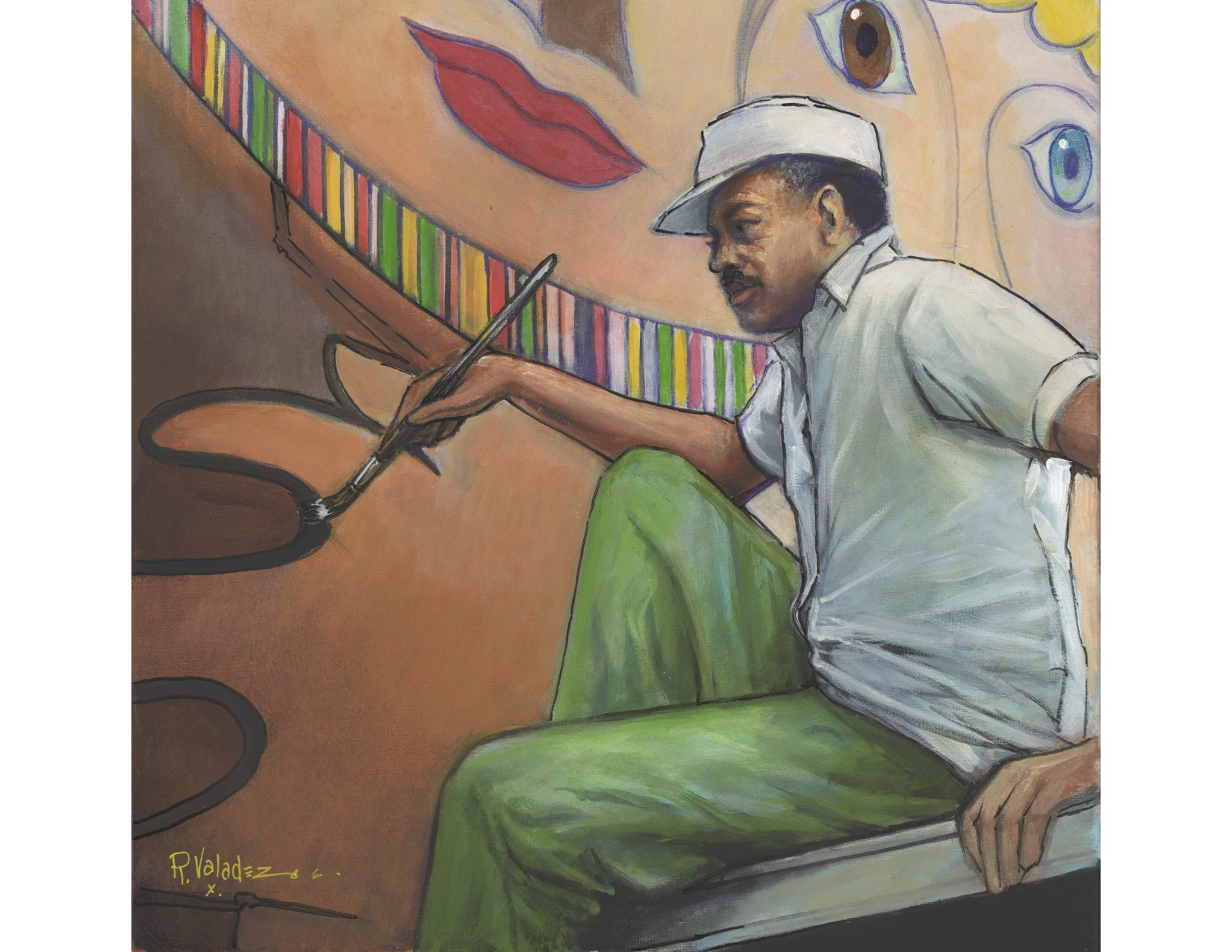He’s been called the forefather of the community mural movement in Chicago, and art historians often compare him to Mexico’s Diego Rivera. Birmingham, Alabama-born artist William “Bill” Walker was the first to engage city neighborhoods in the creation of public artworks that were accessible, that mirrored the people’s pride and plights, and that were spatially and politically transformative.
The South Side is home to more African-American murals from the 1970s and 1980s-era mural movement than any other city in the nation, according to the nonprofit Chicago Public Art Group, which Walker originally co-founded as an artists’ cooperative in 1971 under the name the Chicago Mural Group.
Walker painted dozens of murals, first in Columbus, Ohio, and Nashville and Memphis, Tennessee, and then in Chicago and Detroit. The murals of that time “were meant to raise revolutionary consciousness, to incite a defiant pride, to show that ‘Black is Beautiful,’ to make the people act,” wrote journalist Jeff Huebner in his new book about Walker, Walls of Prophecy & Protest: William Walker & the Roots of a Revolutionary Public Art Movement.
“And from there, it was boom boom boom, a chain reaction, real simultaneous. A lot of people were doing murals at the same time,” said Pilsen muralist and Chicago Mural Group co-founder Ray Patlán.
Walker’s most well-known local works included the 1967 “Wall of Respect,” painted on the side of a tavern at 43rd and Langley in Bronzeville. The mural depicted fifty “heroic images of black dignity,” said Walker, and was painted in collaboration with the Organization of Black American Culture (OBAC) which he also co-founded. Walker was quoted in the Chicago Daily News that year saying, “We don’t give a damn if Mayor Daley ever sees it! … It’s the ghetto’s answer to the Picasso.” The building the “Wall of Respect” was painted on was damaged in a fire in 1971, and demolished shortly after.
“All of Mankind: Unity of the Human Race,” an exterior church mural in the former Cabrini-Green site that showcased Black heroes ranging from MLK to Fred Hampton, was whitewashed in 2015. Previews of the new Candyman movie, set to come out in June, include a shot of the all-white church and a reference to the lost mural.
“I don’t think he was the first person to do murals, but he was the first one to have a real tangible grasp on real community murals,” Patlán said in a 1982 interview. “Here we are in 1967 on the South Side of Chicago. These are abandoned buildings: ‘Let’s take some house paint, anything we got and talk about us. Let’s reflect ourselves, let’s make some mirrors. [We] got street galleries. Walls with tongues.’ ”
Some of Walker’s South Side murals remain: “Childhood is Without Prejudice” on the viaduct at 56th and Stony Island in Hyde Park; “History of the Packinghouse Worker” at 49th and Wabash in Grand Boulevard; and “Wall of Daydreaming” and “Man’s Inhumanity to Man” at 47th and Calumet in Bronzeville.
In a public art manifesto written in 1971 by several artists, Walker said, “[These views] are founded on the ground of knowing from experience, of talking with people in a community during the time that the art project is in progress, of discussing the conditions of their problems and the world, and of realizing how art can become more relevant to the people of the world.”
The rest of his work—as is common with most of Chicago’s early murals—fell victim to time, real estate development, and the cruel Chicago climate, but he’s remembered as a revolutionary street artist by those of his contemporaries who are still around and the countless families who encountered his murals in their daily lives.
Jacqueline Serrato is editor-in-chief of the South Side Weekly. She last wrote in February about how and why Chicago is losing its Black population.


I’m wondering if this is the same Bill Walker who used to live over on S. Green (6531) in Chicago?
Bill Walker was one of my father’s best friends. Whenever my father would talk about art or 43rd street, Bill Walkers name would come up. Bill would paint mostly at night. My father would say, Bill would wake up at 4 in the afternoon and have breakfast at the IHOP in Hyde Park. Bill once painted a mural of my siblings and myself on 47th and Vincennes.